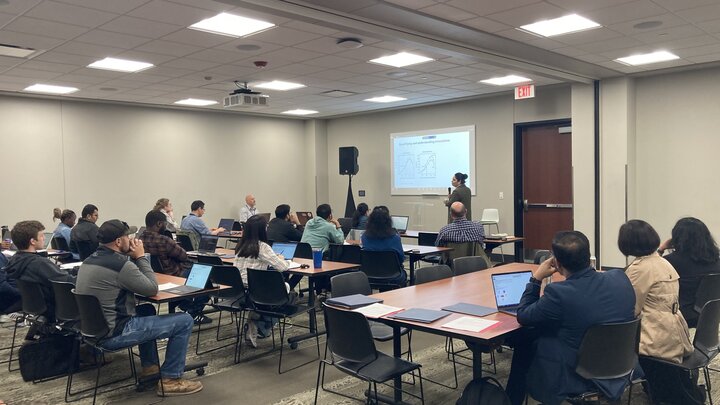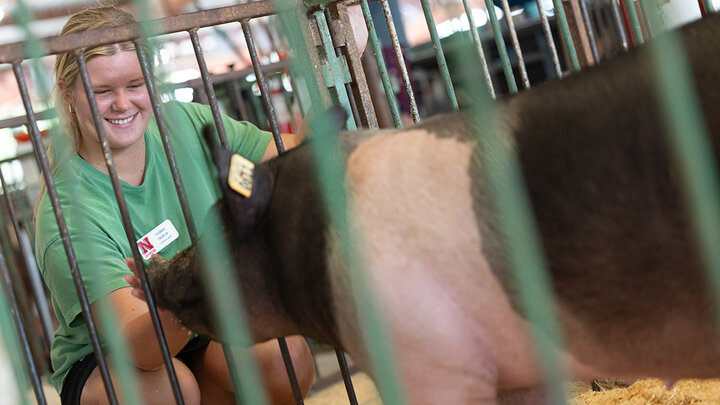USDA-ARS Adaptive Cropping Systems Laboratory (ACSL), in association with the Nebraska Water Center, conducted a half-day workshop and demo on ‘Crop Simulation Models for Agricultural Systems Applications - Introducing the CLASSIM Interface’. This workshop was part of the 2025 Water for Food Global Conference.
The workshop hosted 25 attendees from natural resource districts, state agencies, environmental engineering firms, and universities. Researchers and staff from the ACSL lab in Beltsville, Maryland taught participants how to use the crop models and modeling software their lab created in cooperation with the Nebraska Water Center.
ACSL is at the forefront of developing and improving mechanistic, process-based crop and soil models. These models simulate crop growth and development, yield, root growth, soil water, nutrient, heat and gas dynamics, soil carbon and nitrogen transformations, and gas emissions, and account for environmental, cultivar, and management interactions. The crop models were recently updated with more accurate components for predicting photosynthesis and transpiration, including improved functions for high-temperature responses, and are integrated with a two-dimensional finite element-based soil process simulator.
USDA-ARS ACSL developed the Crop Land And Soil SIMulation (CLASSIM) graphical user interface to provide standardized access to these crop models. CLASSIM is designed to function as a standalone Windows-based application and simplifies the use of USDA crop models for corn, cotton, potato, soybean and cereal rye.
Workshop attendees received hands-on training in using the CLASSIM interface and understanding how crop models can be applied to research and management decisions.



